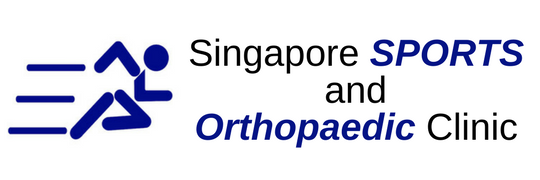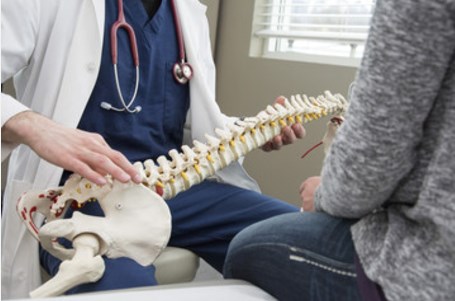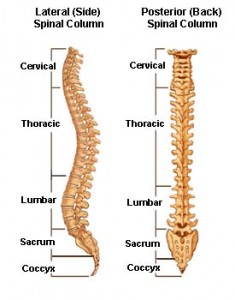What is Microdiscectomy Spine Surgery?
In a microdiscectomy or microdecompression spine surgery, a small portion of the bone over the nerve root and/or disc material from under the nerve root is removed to relieve neural impingement and provide more room for the nerve to heal.
A microdiscectomy is typically performed for a herniated lumbar disc and is actually more effective for treating leg pain (also known as radiculopathy) than lower back pain.
Impingement on the nerve root (compression) can cause substantial leg pain. While it may take weeks or months for the nerve root to fully heal and any numbness or weakness to get better, patients normally feel relief from leg pain almost immediately after a microdiscectomy spine surgery.
In general, if a patient’s leg pain due to a disc herniation is going to get better, it will do so in about six to twelve weeks. As long as the pain is tolerable and the patient can function adequately, it is usually advisable to postpone back surgery for a short period of time to see if the pain will resolve with non-surgical treatment alone.
If the leg pain does not get better with nonsurgical treatments, then a microdiscectomy surgery is a reasonable option to relieve pressure on the nerve root and speed the healing. Immediate spine surgery is only necessary in cases of bowel/bladder incontinence (cauda equina syndrome) or progressive neurological deficits. It may also be reasonable to consider back surgery acutely if the leg pain is severe.
A microdiscectomy is typically recommended for patients who have:
- Experienced leg pain for at least six weeks
- Not found sufficient pain relief with conservative treatment (such as oral steroids, NSAID’s, and physical therapy).
However, after three to six months, the results of the spine surgery are not quite as favorable, so it is not generally advisable to postpone microdiscectomy surgery for a prolonged period of time (more than three to six months).
How is a Microdiscectomy Spine Surgery Performed?
In a microdiscectomy spine surgery, a magnifying device is used to examine the disc and nerves. Using this it becomes possible to perform the surgery through a small incision of 1 or 1.5 inches. The incision is made in the lower back midline. The muscles of the back are moved out of the lamina of the spine. The membrane above the nerve roots is removed. Usually, a part of the inner facet joint is also removed to access the nerve root and remove pressure on the nerve. The nerve root is gently moved out of the way, and the disk is removed from beneath the nerve root. To complete the surgery, all the layers of incisions are closed with stitches or staples.
How to Prepare for the Surgery?
The patient should inform the doctor about any ailments, medical conditions and medication that the patient may be taking.
The patient should not smoke for several days before the surgery.
Two weeks prior to the surgery, the doctor may stop certain medication that the patient may be taking.
The patient is required to do some tests before the surgery. They may include the following:
- MRI
- CT scan
- Myelogram
Recovery of the Surgery
- The patient is encouraged to move around once the anesthesia wears off.
- Pain medication may be prescribed by the doctor.
- Sitting for more than 15-20 minutes may cause discomfort and should be avoided.
- Some patient may need to undergo rehabilitation, which includes physical therapy.
- Follow up visits may be scheduled by the doctor and the surgical stitches may be removed during these visits.
Risks of the Surgery
The risks involved in microdiscectomy spine surgery are rare. They include:
- Injury to the nerve roots
- Damage to the spinal structures
- Infection
- Blood clot
- Risks of anesthesia
- Bleeding
- Leakage of cerebrospinal fluid
- Bowel and bladder incontinence
- No pain relief
After Care of the Surgery
- Patients should avoid strenuous activities that cause pain.
- Patients may walk to exercise for a few weeks after the surgery. This also reduces the risk of severe scar tissues.
- Exercises like bicycling and swimming may be started 2 weeks after the surgery if the doctor permits.
- Activities that involve bending and twisting of the waist should be avoided for 2 to 4 weeks after the surgery.
- Patients with a sedentary job may return to work in one to two weeks after surgery. However, patients with strenuous jobs may need to avoid working for four to six weeks.
- The incision area should be kept dry.
- Patients should avoid taking baths and showers until the wound has healed, usually around 2 weeks after the surgery.
Microdiscectomy Success Rates
The success rate for microdiscectomy spine surgery is approximately 90% to 95%, although 5% to 10% of patients will develop a recurrent disc herniation at some point in the future.
A recurrent disc herniation may occur directly after back surgery or many years later, although they are most common in the first three months after surgery. If the disc does herniate again, generally a revision microdiscectomy will be just as successful as the first operation. However, after a recurrence, the patient is at higher risk of further recurrences (15% to 20% chance).







